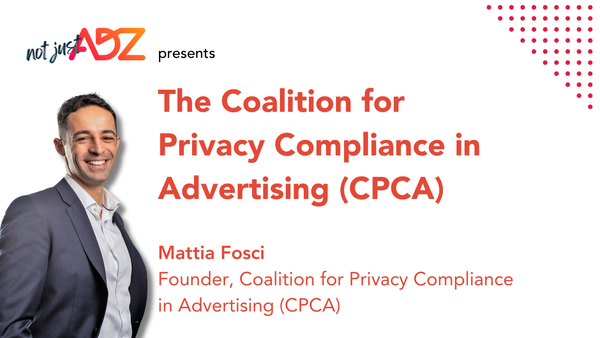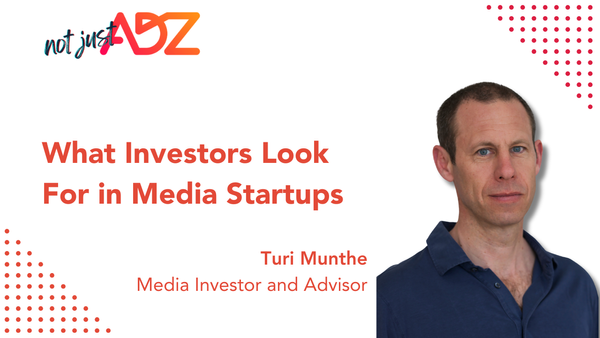Data Platforms Enable First-Party Data Strategies — But Aren’t A Substitute For One | AdExchanger
This is amazing news, as they put media owners back at the very center — the lynchpin of the digital advertising and marketing of the…

After several months of debate, speculation and conflicting positions following the earthquake caused by privacy regulation changes and global trends, the industry seems to cluster around and agree on a few concepts for the future: identity, consent and first-party data.
This is amazing news, as they put media owners back at the very center — the lynchpin of the digital advertising and marketing of the future.
Publishers sat on unexploited first-party data for years, but today it is discussed as if it was some crazy new discovery. That says a lot about why media brands are struggling, but it also gives a glimpse of the threat from middlemen wanting to sink their claws in publishers’ assets once again.
Media owners are now finally conscious of the power and opportunity in their hands. Some are confident, with clear ideas, but others seem overwhelmed by the task ahead and the realization that first-party data goes far beyond just programmatic or display advertising.
Some lazy media owners could once hide their lack of a data strategy by sprinkling their inventory with third-party data and pushing it through the programmatic ecosystem. That has become harder to do.
Some ad tech executives I’ve spoken to see their role as empowering media owners and helping them confidently assume the driver’s seat.
Easier said than done.
There has been a misconception, often on the part of media brands, that signing a contract with an audience and data platform meant they had the data piece covered — as if the platforms were magic boxes that generated actionable data and revenue with the push of a button. Add a few tags to the website or app, emails in the CRM and a bit of third-party data here and there, and that was it.
This is not the case. Technology platforms should strengthen media brands’ data and audience strategies and be used as tools to bring the strategies to life and reap the benefits, rather than be viewed as an end goal.
1. The framework
A data and audience strategy can be split into two key pillars — the framework and its end objective, the user.
Flexibility and adaptability: A data strategy must be built upon a flexible framework that is adaptable to the industry’s rapid commercial, technological and privacy-related changes, while incorporating short-, medium- and long-term visions. The framework should provide for adding and removing online and offline data sources, easily integrating into multiple channels well beyond programmatic and setting up data partnerships to fill the data gaps and improve revenue, including the collection of additional data that the user may be willing to provide. It should be independent and not tightly tied to any specific technology partner or platform.
A single approach with multiple stakeholders and use cases: In a fragmented digital world, media brands’ success depends on breaking down data silos while making data useful and accessible to multiple teams with different needs. Commercial, advertising, marketing, insight and editorial teams may have multiple use cases within their departments, such as subscriber acquisition and retention teams, for example. A unified, common approach increases consistency, effectiveness and user experience while optimizing time, money and human resources: Monetization does not only mean generating revenue, but optimizing and reducing costs.
2. The user
A reflection of the company’s assets and essence: The changes in the industry create a perfect opportunity for a media brand to boldly differentiate itself through its most valuable assets: unique content that generates unique data and opportunities for profiling and segmentation of users and their interaction with the topic presented (contextual). A taxonomy should be a mix of external and internal client needs but also the expression of the media owner’s DNA.
SCV: “Single customer view” is not an obsolete term. Building a comprehensive view, above any activation channel, means using all available data — while minding GDPR’s limitations — plus the ability to select specific user attributes and characteristics based on the client’s objective and use case. It is also the underlying strength of the “single approach to multiple use cases” part of the framework.
A thought on identity: Why should media owners provide the opportunity to identify their users to third parties, which will then control the identity layer and make those very media brands dependent on it? Who says that identity shouldn’t be resolved within a quality media ecosystem or alliance that is managed by media owners, for their own benefit and the benefit of their users and advertisers, rather than being shared for someone else to monetize? We take for granted a Facebook ID or a Google ID; why should only quality media owners hand theirs over?
User at the center: Users must have full knowledge of everything done with their data. A media brand is in a unique position to leverage the direct relationship with its audiences fairly and transparently, but this adds responsibilities and educational duties. Some players are already using consent as an object and commodity, when it should be the product of a personal relationship and exchange of value and trust, involving a dedicated team spanning commercial, marketing, communication and legal departments, rather than just the latter providing a paragraph added to the consent request.
Parting thoughts
Not just behavioral: I will never tire of underlining this point: Through data, a media owner should build holistic, complete and actionable knowledge of their users and media environment, not just react to passing trends and narrow business cases.
The right people need to be in charge of a media owner’s strategy. You would be surprised by how often companies assign internal resources to those without subject matter expertise on data or, even more importantly, on the intersection of data, media and advertising. And only after something goes wrong do they bring in the “experts,” wasting resources to sort out the mess instead of building value.
Equally and remarkably, many external consultants out there are advising media owners without having ever worked in a media environment.
Nuances make a huge difference, and the choice of who will run the project will determine the end result.
Finally, privacy trends and regulations have made it paramount that media companies develop a thorough and comprehensive data strategy above and beyond platforms. These should be agnostic and independent tools that operate in the background at the service of media owners, rather than taking the focus. It is a huge opportunity for media brands, and they should not let history repeat itself by handing over control of their most valuable assets to third parties and middlemen.
Originally published at https://www.adexchanger.com on October 18, 2019.





